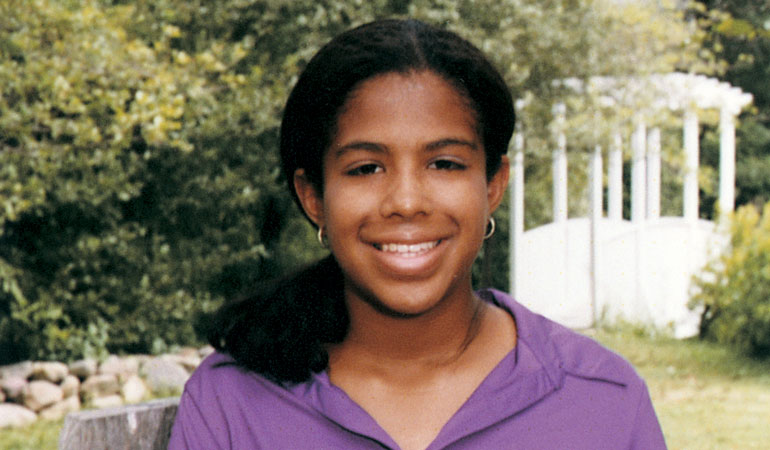At my third birthday party, a little boy asked me why I was black. I responded with a simple, logical answer: “Oh, because I ate a chocolate donut.” At that age, race, culture, and heritage were not big issues.
I was more interested in toys, Sesame Street, and my favorite food, strawberries. Now, however, race is like a hurricane in my head crashing and thrashing about, leaving me feeling dizzy and confused.
Early Childhood
My parents adopted me three days after I was born. When I met them, I was tiny, sleepy, and unaware that anything important was happening. Because I was so young, I had no concern about my parents being white and my being black.
As I entered preschool, the fact that I was black and everyone else was white did not occur to me. Being in the minority never bothered me because, in my mind, I was just like everyone else.
As a child in a mainly white town, I felt alienated from African-American culture. I looked at the cover of Rosa Parks’ My Story and felt afraid of the black face that stared back at me. My mother bought me black dolls, showed me movies about the Underground Railroad, and taught me about civil rights heroes.
Instead of embracing these symbols of my culture, I shunned them. Yet, even though black culture seemed somewhere far away, I harbored a tiny connection to it. A second grade project required that we do a paper on an important person in history. Immediately, I felt an obligation to do my paper on an African American. I chose Harriet Tubman.
Connecting with my Culture
My mother was the one who encouraged me to connect with other African Americans. Even though Mom is white, she has been the one to teach me racial pride.
The most important thing she did was to drag my siblings and me to another town to attend a black church. The church was located in a small apartment complex next to a McDonald’s. I was afraid of it, and I thought it smelled strange.
While my brother and I fit in because of our color, my mother and my white sister were in the minority. But even though I fit in physically, I never felt at home. I stared and wondered about the large hats and interesting dresses people wore. I did not feel connected to these people.
As they sang and rejoiced, I sat in my chair wishing I could go home. Everyone was friendly, loud, and interested in our family. We kept going, although the only thing I enjoyed was the Dunkin Donuts that were offered to us every week.
Accepting My Race
My desire to be white like everyone else began to fade slowly as I entered my later teenage years. In junior high, I still wanted to be in the majority, not the minority. I felt that I had nothing in common with anyone black because I did not know many black people.
I finally began to come to terms with myself as I moved through the preteen, brace-face, and teen-idol years. Something inside me changed. I saw black faces on television and began to feel a connection with them. With the rise of hip-hop and black artists in the music industry, I felt pride in my heritage for the first time.
My heroes have changed from white actresses and leaders to the more diverse people my mother taught me about. Now I can connect with Martin Luther King, Jr., Rosa Parks, Jesse Owens, Jackie Robinson, Malcolm X, and other African-American heroes.
The part of me that felt isolated from my race has not disappeared. I often feel caught between two worlds as I ask myself: Where do I belong? I look in the mirror and see a black girl with nappy hair and light-brown skin. On the inside, I am a girl who has always been at home in this mainly white town.
I am learning more about black culture as I break away from the whiteness I have always felt. Sometimes I yearn for the days when questions about race could be answered with a chocolate donut. Those days, however, are over, as I look forward to walking out into a diverse, multi-cultural world.



